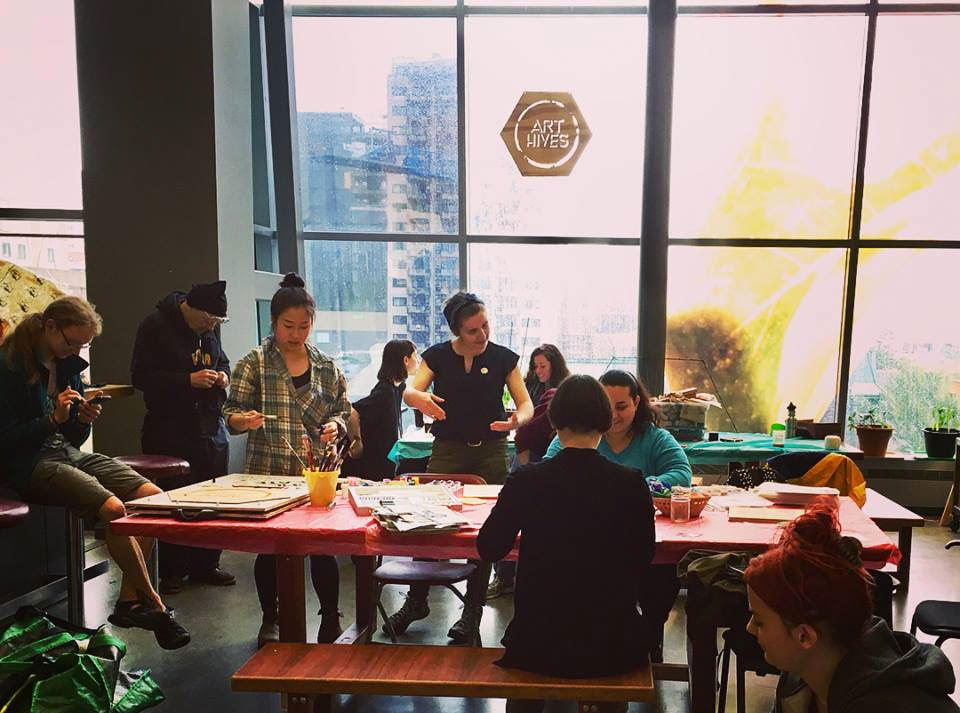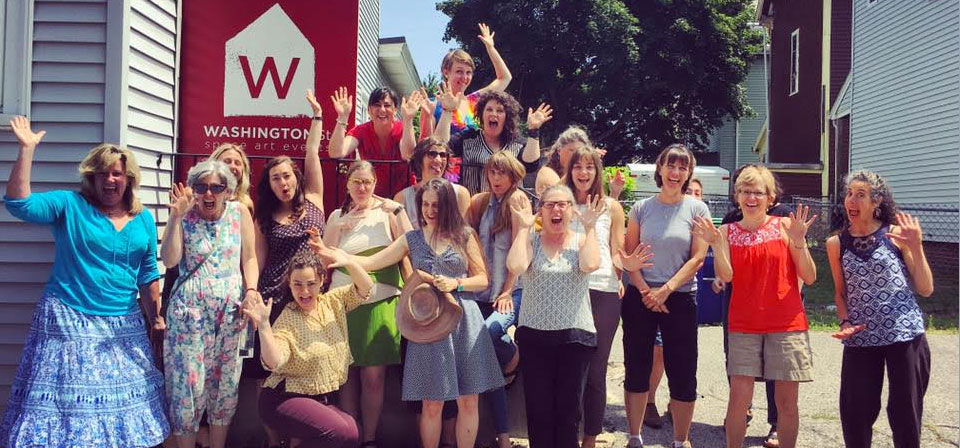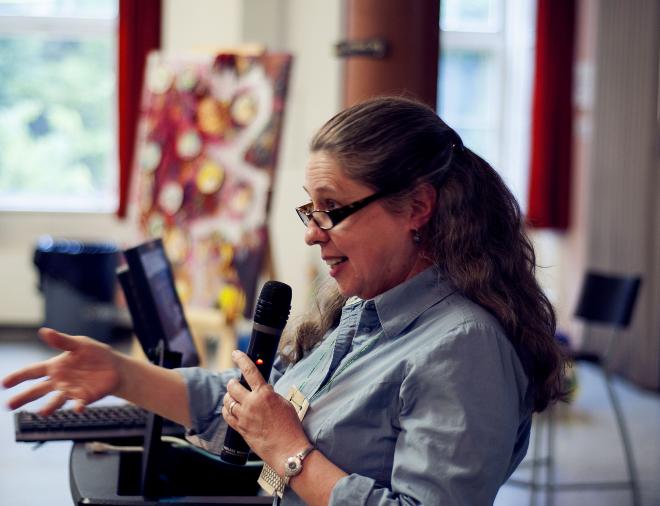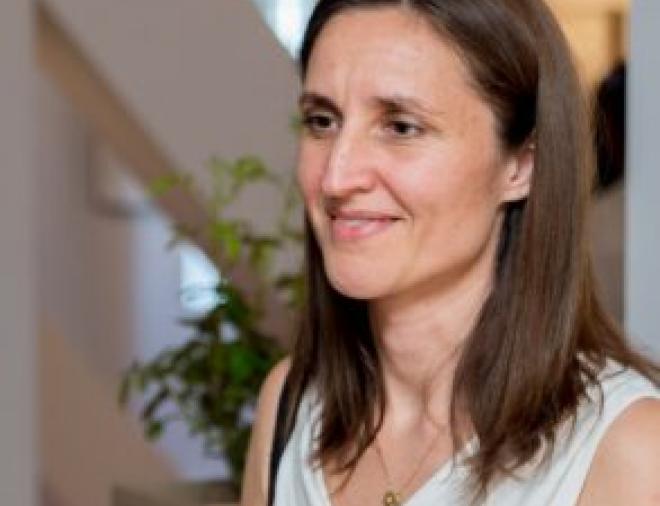
The Art Hives Headquarters, based at Concordia University in Tiohti:áke (Montreal, Quebec, Canada) holds at its heart the vision of inclusive creative third-spaces in every neighbourhood across the globe. This approach is the result of three decades of research and experimentation by researcher Dr. Janis Timm-Bottos, art therapist, and associate professor in the Faculty of Fine Arts at Concordia University.
This living lab acts as a dynamic epicenter where consulting, education, research, co-development and social innovation activities bolster the growth and sustainability of Art Hives worldwide, and the pollination of Public Practice Art Therapy, a term coined by Dr. Janis Timm-Bottos.
The Art Hives HQ is funded by Concordia University and previously has been funded by the Rossy Foundation, the J.A. De Sève Foundation, and the McConnell Foundation.
Where to find us
The Art Hives HQ
Concordia University
2155 Guy, ER-101
Montreal, QC
Canada H3G 2W1
What we do
The Art Hive HQ offers training and consulting (mostly free and sometimes at a social rate) in groups and individually, in order to spread its open-source model of community art studios that are free, non-directed, and open to all.
This website is a directory of the various projects that are part of the Art Hives Network around the world, with the aim to contribute to their visibility and accessibility to the public, and to facilitate making contact and initiating collaboration between Art Hive practitioners.
Contact us to book a session, in person or via videoconference
Art Hives Community of Practice
The community of practice is an opportunity for Art Hives practitioners everywhere to come together and exchange feedback with their peers about their experiences, questions, concerns and dreams. These meetings are held every two weeks, on Fridays 10am-12pm ET (Montreal), online on the Zoom Platform.
The Art Hives Institute
The Art Hives Institute is a 4-day experiential intensive teaching the theory, methods and materials to create inclusive public home places which bring multiple opportunities for community building and healing through art making, dialogue and skillsharing into neighbourhoods.
The course is offered by Dr. Janis Timm-Bottos, Creative Arts Therapies professor at Concordia University and Rachel Chainey, Art Hives Network Coordinator, art therapist and social entrepreneur, in collaboration with diverse Art Hives practitioners. It is designed for professionals already working in an Art Hive setting or serious about getting started with that type of third space. While covering the theoretical underpinnings and practical aspects, it will also provide plenty of time for group discussion, skill-sharing, site visits and hands-on community art studio sessions.
No prerequisite courses are needed. Previous experience in a community art studio is preferable.
After these 4 days, participants take away:
- A new network of passionate colleagues and the many skills, ideas, tools and art making we will have shared together.
- An overview of different art hives models (legal structures, organizational models) and ways to get them off the ground and sustain them.
- A deepened understanding of the values and philosophical and historical inspirations of Art Hives and of the impact of these arts-based third spaces on individuals and communities.
Want us to come teach the Art Hives method in your community? Contact us!
The "Community Art Studio: Methods and Materials" credit course at Concordia University
Instructor: Dr. Janis Timm-Bottos Department: Creative Arts Therapies Please contact the department for registration
This experiential course is taught by associate professor, Dr. Janis Timm-Bottos (Creative Arts Therapies) in a welcoming community setting, La Ruche d'Art St-Henri, an arts-based third space fostering social inclusion and community building.The course, offered annually since 2011, attracts students across the university, including creative arts therapies, art education, studio arts, theater, music, philosophy, urban planning and anthropology.The course is cross-listed in order to welcome both graduate and undergraduate students, as well as community members who join the cohort as independent scholars.
Hands-on learning and art making are integral to every aspect of this course. In addition to connecting with community members within the studio in the post-industrial neighbourhood, students are also required to complete 15 hours of service learning within other grassroots or institutional settings that are part of the Art Hives Network.These urban art hives which share the strength-based, free and open access inherent to all Art Hives, they are also quite diverse: from social housing, to city parks, co-ops, seniors' residences, libraries, community missions, womens’ centres, schools and museums. In every setting, students practice the non-interventionist methods at the core of the Art Hives model of public practice art therapy: witnessing, arts-based humble inquiry, informal and horizontal skill sharing through ''Each-One-Teach-One'', as well as building studio relationships within each ''public
homeplace'' (Belenky, 1996), as they learn about the ''ethics of discomfort'' (Foucault in Rabinow, 1994).
Firmly rooted in the Psychologies of Liberation (Watkins & Shulman, 2008), public practice art therapy as developed at Concordia University invites all students to begin to examine their own social location as it relates to privilege, power, and the oppressive forces of colonialism and gentrification at play in their communities.Throughout the course, students undertake important steps of a journey, deepening their understanding of these concepts and their personal relationship to them, through art making and the reflective practice of field notes.The course culminates with a public presentation of the students' final projects, attended by community members, academic partners, and funders.
The 2017 cohort was invited to reflect on the implications of colonialism by participating in the Art Hive's Community Listening Circles based on the book ''Unsettling the Settler Within'' (Regan, 2010) as well as in the Blanket Exercise (https://www.kairosblanketexercise.org/).The class then created artwork on the theme ''Reconcile'' and shared their personal stories around reconciliation during a public presentation as well as in the format of blog articles shared on the Art Hives website.
Art Hives Internship Awards For Creative Art Therapies Students
The Art Hives Internship Awards are graciously funded by the J.A. De Sève Foundation. Creative Arts Therapies students at Concordia University are invited to propose an internship and/or research project idea that responds to the needs and interests of an Art Hive, located in a neighbourhood or institution anywhere in Quebec.These learning opportunities will allow students to develop hands-on skills relevant to their career path and apply their academic learning through public practice arts engagement, while building connections and making a measurable impact at the grassroots level. On-site supervision is provided by a Registered Art Therapist for Art Hives Internships, as needed.




